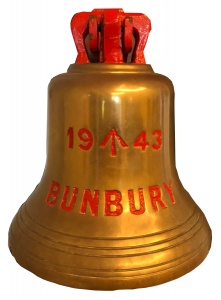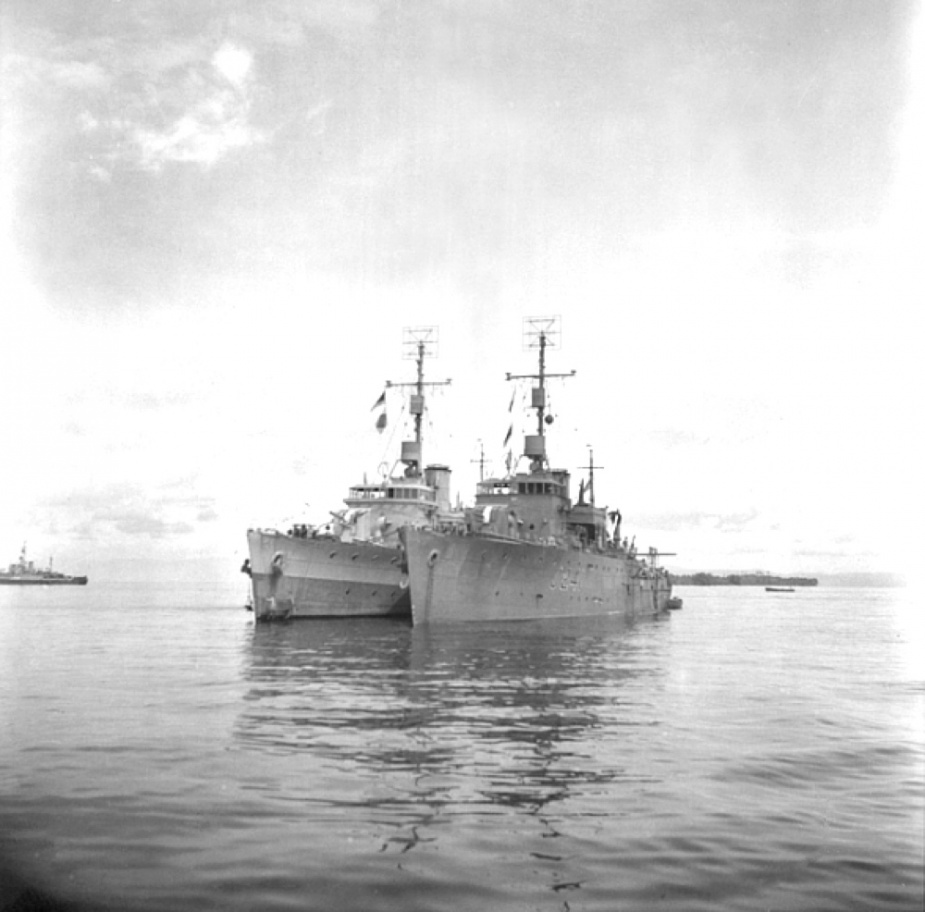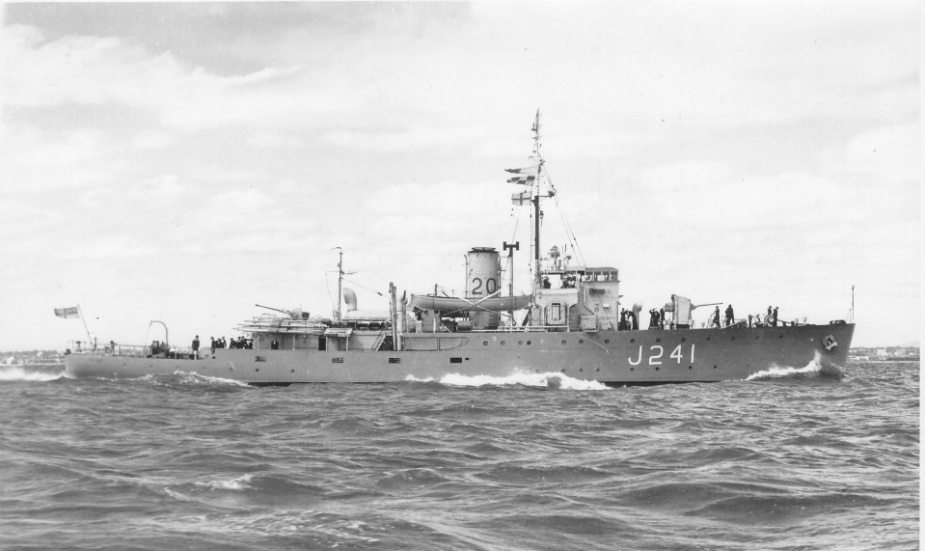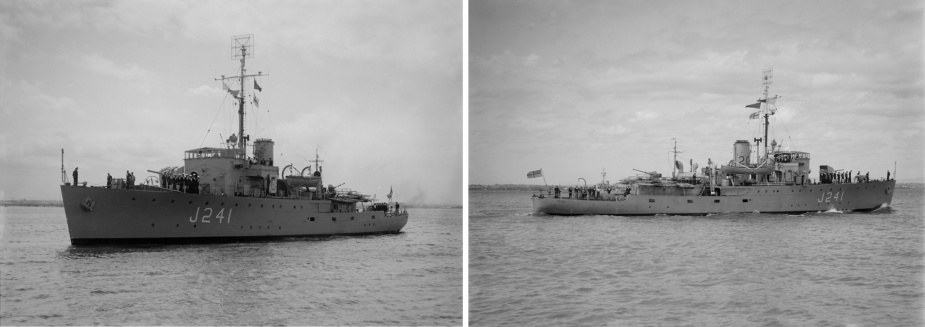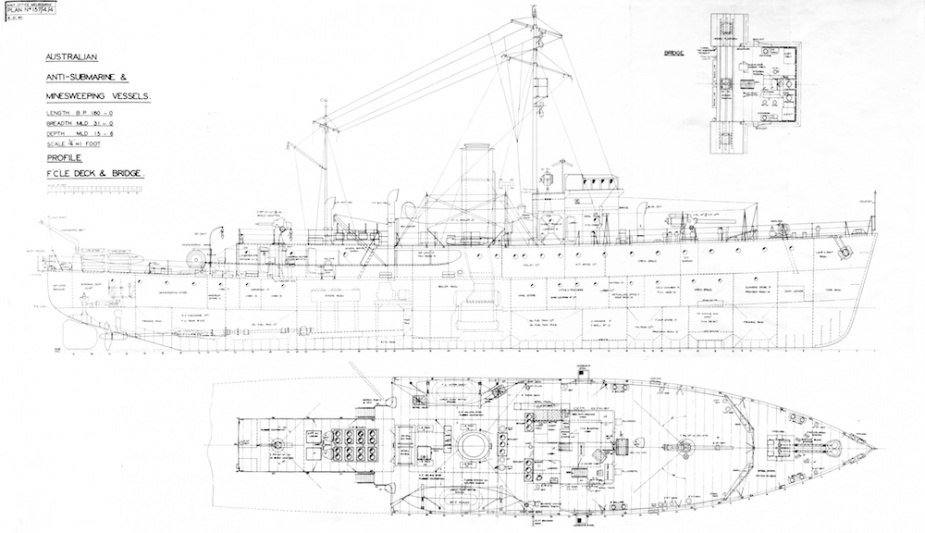HMAS Bunbury (I)
| Class |
Bathurst Class |
|---|---|
| Type |
Australian Minesweeper |
| Pennant |
J241 |
| Builder |
Evans Deakin & Co Ltd, Brisbane |
| Laid Down |
1 November 1941 |
| Launched |
16 May 1942 |
| Launched by |
Mrs Cooper, wife of Treasurer of Queensland |
| Commissioned |
3 January 1943 |
| Decommissioned |
26 August 1946 |
| Dimensions & Displacement | |
| Displacement | 650 tons |
| Length | 186 feet |
| Beam | 31 feet |
| Draught | 8 feet 6 inches |
| Performance | |
| Speed | 15 knots |
| Complement | |
| Crew | 85 |
| Propulsion | |
| Machinery | Triple expansion, 2 shafts |
| Horsepower | 2000 |
| Armament | |
| Guns |
|
| Other Armament |
|
| Awards | |
| Battle Honours | |

HMAS Bunbury was one of sixty Australian Minesweepers (commonly known as corvettes) built during World War II in Australian shipyards as part of the Commonwealth Government’s wartime shipbuilding programme. Twenty were built on Admiralty order but manned and commissioned by the Royal Australian Navy. Thirty six (including Bunbury) were built for the Royal Australian Navy and four for the Royal Indian Navy.
HMAS Bunbury was laid down at Evans Deakin & Co Ltd, Brisbane, Queensland on 1 November 1941. She was launched on 16 May 1942 by Mrs Cooper, wife of Treasurer of Queensland and was the first RAN warship to carry the name of the coastal city in WA, located 175 kilometres south of the state capital, Perth.
Bunbury commissioned at Brisbane on 3 January 1943 under the command of Lieutenant John S Bell RANR(S).
HMAS Bunbury began operational duty as an escort vessel on the east coast of Australia. At this time (January 1943) the Japanese were beginning their third and last attempt to disrupt the flow of supplies to the forward areas by stationing submarines in Australian coastal waters. However, although eleven ships were lost off the Australian coast before the enemy withdrew in May 1943, none were sunk or damaged while being escorted by Bunbury.
In late April 1943 Bunbury transferred to the northern area and based on Townsville began escorting convoys to Port Moresby and Milne Bay. These duties, which were arduous under the tropical conditions but uneventful, kept Bunbury almost constantly at sea until January 1944 when she proceeded to Melbourne for refit.
In March 1944 she returned to the Now Guinea theatre, where she was engaged on escort and general duties, until forced to return to Brisbane for repairs in April 1944 after running aground at Cape Cretin.
Returning to New Guinea in May 1944, Bunbury resumed escort duties mainly between Madang, Langemak, Hollandia and Aitape. In August 1944 she began escorting convoys between Thursday Island and Darwin. In September she proceeded to Fremantle via the west coast, thence to Adelaide for docking.
On 31 October 1944 Bunbury returned to Fremantle having visited her namesake town for the only time. Based on Fremantle she was used for tactical exercises with United States Navy submarines until 17 December when a collision with HM Submarine Sea Rover put her in dockyard hands for a month. On 12 January 1945 she resumed her interrupted exercise programme with American submarines until 17 April, when she sailed via Onslow and Thursday Island for New Guinea, where she operated on patrol and as a guard ship in the Mios Woendi, Biak and Morotai area. On 7 July 1945 she sailed for Adelaide for refit, bringing her war service to a close. By the time she reached Adelaide she had steamed 88,000 miles on war service.
In November 1945 Bunbury joined the 20th Minesweeping Flotilla for sweeping operations off Hobart and in Spencer Gulf. Work with the Flotilla in Australian waters continued until 29 May 1946 when Bunbury arrived in Sydney to pay off. Bunbury paid off on 26 August 1946 bringing her seagoing career to a close after steaming 101,000 miles since commissioning.
Note: This video is hosted on YouTube. Department of Defence users will not be able to view this video on the Defence Protected Network.
This cine film has been placed online as part of the Sea Power Centre - Australia's ongoing archival digitisation program.
Further reading
- 'The Corvettes: Forgotten Ships of the Royal Australian Navy' by Iris Nesdale - published by the author, October, 1982
- 'Corvettes - Little Ships for Big Men' by Frank B Walker - published by Kingfisher Press, NSW, 1996
- 'The Australian Centenary History of Defence Volume III, The Royal Australian Navy' edited by David Stevens, Oxford University Press, South Melbourne, Victoria, Australia, 2001.


